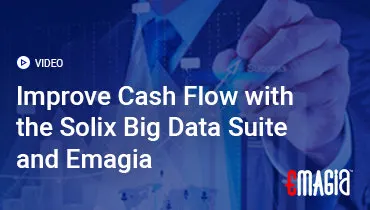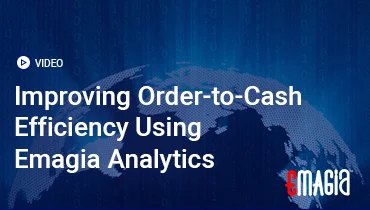In the digital age, where financial transactions happen at lightning speed, it’s easy to lose sight of the foundational documents that underpin our monetary lives. Yet, for both individuals and businesses, one document remains an indispensable cornerstone of financial management: the bank statement. Far more than just a piece of paper or a digital file, a bank statement serves as a comprehensive narrative of your financial activity, detailing every penny that moves in and out of your account.
So, what is a bank statement, truly? It’s an official summary, a historical record, and a critical tool for understanding your financial health. Whether you receive a paper copy in the mail (a classic bank statement picture of finance) or access a digital version online (a modern bank balance statement snapshot), this document provides unparalleled insight into your spending habits, income sources, and any charges applied to your account. Without regularly reviewing this vital record, you risk overlooking errors, missing fraudulent activity, and making financial decisions in the dark.
This comprehensive guide will meticulously explore what is a bank statement, its core components, its various formats, and its profound importance in personal and business finance. We’ll delve into how to read one, why regular review is essential for fraud detection and budgeting, and how to obtain your bank statement transaction details. By the end, you’ll have a complete understanding of this fundamental financial document and how it empowers you to maintain greater control and transparency over your money.
Understanding the Essentials: What is a Bank Statement?
Let’s begin by clearly defining what is a bank statement and its fundamental role in financial record-keeping.
Bank Statement Meaning: A Record of Your Financial Journey
A bank statement is an official summary of all financial transactions that occurred within a specific period (typically monthly, but sometimes quarterly or annually) for a particular bank account held by an individual or business with a financial institution. Think of it as a detailed ledger or a transaction statement that chronicles every inflow (deposits, credits) and outflow (withdrawals, debits, fees) of money, providing a chronological history of your account’s activity. It essentially answers the question, “what is meant by bank statement?” by presenting a clear, verifiable record.
It is, in essence, a bank copy of your account’s financial journey over a set timeframe, providing a concrete account summary for your review.
The Core Purpose: Why Banks Issue Statements
Banks issue statements for several crucial reasons:
- Transparency and Accountability: To provide account holders with a clear and verifiable record of all bank transaction statement details, ensuring transparency in their financial relationship.
- Customer Information: To inform customers about their bank balance statement, transaction history, and any charges or interest applied.
- Regulatory Compliance: Financial institutions are often required by law to provide regular statements to account holders.
This commitment to clarity makes the bank statement a copy of your account’s activity that is essential for both parties.
Key Components of a Comprehensive Bank Statement Transaction Summary
While the exact layout may vary between financial institutions, a typical bank statement example will include several universal elements, providing a thorough bank statement description of your account’s activity.
1. Account Holder and Bank Information
- Your Name and Address: The name(s) of the account holder(s) and their registered mailing address.
- Account Number: The unique identifying number for your bank account (often partially masked for security).
- Bank Name and Contact Details: The name of the financial institution, its logo, and contact information for customer support.
2. Statement Period and Balances
- Statement Date: The date the statement was generated.
- Statement Period: The specific date range covered by the statement (e.g., “From May 1, 2025, to May 31, 2025”). The start date is usually the day after the previous statement’s end date.
- Beginning Balance: The amount of money in your account at the start of the statement period.
- Ending Balance: The amount of money in your account at the close of the statement period. This is your updated bank balance statement.
3. Detailed Bank Statement Transaction History
This section is the heart of the statement, listing every individual transaction chronologically. For each bank statement transaction, you’ll typically find:
- Transaction Date: The date the transaction occurred or was processed.
- Posting Date (or Value Date): The date the transaction was officially recorded by the bank and affected your balance (may differ from transaction date due to processing times).
- Transaction Description: A brief explanation of the activity (e.g., “Deposit – Salary,” “POS Purchase – XYZ Store,” “WDL TFR meaning withdrawal transfer). This is where you see the bank related transaction entry include in detail.
- Debit/Credit: Indicates whether funds were withdrawn (debit) or deposited (credit). Withdrawals typically reduce your balance, while deposits increase it.
- Amount: The monetary value of the transaction.
- Running Balance: An updated balance after each transaction is applied, allowing you to track your funds’ movement in real-time within the statement period.
This comprehensive transaction data of the bank is crucial for accurate record-keeping.
4. Fees and Interest
- Bank Charges: Any fees levied by the bank, such as monthly service fees, ATM fees, overdraft fees, foreign transaction fees, or “stmt charges” (statement charges).
- Interest Earned: For interest-bearing accounts, the amount of interest accrued and credited to your account during the period.
Types and Formats of Bank Statements: From Paper to Digital
The evolution of banking has brought forth various ways to receive and access your bank statement definition.
1. Paper Bank Statements (Traditional Format)
Historically, a bank statement is a copy of your transactions delivered in a physical, printed format via postal mail. Many individuals and businesses still prefer this tangible record, often keeping a bank statement photo or physical copy for their records.
2. Electronic Bank Statements (e-Statements)
Increasingly popular, e-statements are digital versions accessible through online banking platforms or mobile apps. They are usually provided in a secure PDF format (like a digital bank statement form), reducing the ability to alter the statement. E-statements offer convenience, speed, and are environmentally friendly. You often receive an email notification when a new e-statement is available.
3. Mini Statements and Transaction Histories
- Mini Statement: A summarized version, usually listing the last 3-5 transactions from an ATM or via mobile banking. It offers a quick glance but isn’t a full monthly statement.
- Transaction History: A digital record of all transactions over a user-defined period, often available through online banking portals. While similar to a bank statement transaction list, it might not always carry the same official weight or format as a full monthly statement.
The Indispensable Importance of a Bank Statement for Financial Health
Regularly reviewing and understanding your bank statement is paramount for effective financial management, fraud prevention, and compliance.
1. Budgeting and Expense Tracking
Your bank statement transaction details provide the raw data for effective budgeting. By categorizing your expenses (e.g., groceries, utilities, entertainment), you can identify spending patterns, spot areas of overspending, and make informed adjustments to your budget. It’s a mirror reflecting your financial habits, offering crucial insights for personal finance and business budgeting.
2. Error Detection and Fraud Prevention
One of the most critical reasons to review your monthly statement is to detect errors or fraudulent activity. Banks typically have a limited timeframe (e.g., 30-60 days) within which you can dispute unauthorized transactions or discrepancies. Prompt review allows you to quickly identify any suspicious entries (e.g., an unfamiliar “WDL TFR meaning an unexpected withdrawal) and report them to your bank, safeguarding your funds. This proactive approach helps prevent financial loss.
3. Bank Reconciliation for Accuracy
For businesses and diligent individuals, a bank statement is essential for bank reconciliation. This process involves comparing your internal accounting records (e.g., your cash ledger or accounting software) with the bank’s records to ensure every transaction is accounted for and balances match. It helps identify missing deposits, outstanding checks, bank errors, or unrecorded fees (“stmt charges”), ensuring your books are always accurate and ready for audit.
4. Proof of Income and Financial Verification
A bank statement often serves as an official document for various financial and legal purposes:
- Loan and Mortgage Applications: Lenders frequently require recent bank statements to verify income, assess financial stability, and evaluate creditworthiness.
- Visa and Immigration Applications: Many countries require bank statements as proof of funds to support yourself during your stay.
- Tax Filing: They provide verifiable evidence of income and expenses for tax purposes.
- Identity Verification: Sometimes used in conjunction with other documents for identity verification (a bank statement photo or bank statement example can be used as part of verification).
5. Monitoring Savings and Debt
By reviewing your bank statement definition and details, you can track progress towards savings goals or monitor your debt repayments. It provides a clear overview of how your financial decisions are impacting your balances over time, ensuring you stay on track with your financial objectives.
How to Access and Request Your Bank Statement
Accessing your bank statement is straightforward, with several convenient options available.
Online Banking and Mobile Apps
The easiest way to get your bank statement is usually through your bank’s online banking portal or mobile application. Most banks allow you to view, download (often as a PDF, like a digital bank statement form), or print your e-statements for current and past periods. Look for sections like “Statements,” “e-Documents,” or “Account Activity.” For example, if you’re wondering, “how to take SBI bank statement,” their online portal or mobile app would be the primary method.
Directly from the Bank Branch
You can visit your bank branch and request a physical copy of your bank passbook statement or specific monthly statements. Be aware that some banks may charge a fee for printed historical statements (especially if it’s an application for bank statement for past years).
Requesting by Mail
Most banks still offer the option to receive paper statements by mail. You can typically set this preference through online banking or by contacting customer service. If you need a specific statement, you might need to submit a formal bank statement application in English or a similar written request.
Writing a Letter for a Bank Statement (Traditional Method)
While less common now, you might need to know “how to write letter for bank statement” for certain situations, especially for older or specific requests. This involves a formal written request to your bank, detailing your account information, the period for which you need the statement, and your signature. This might be relevant for cases like “bank me statement ke liye application” in a formal setting.
How Emagia Helps Elevate Your Financial Operations
In the dynamic landscape of modern finance, the ability to rapidly process and deeply understand your financial data is paramount. While manually analyzing a bank statement provides fundamental insights, the sheer volume of transaction data of the bank is received by businesses often makes this task overwhelming and prone to error. This is where Emagia’s AI-powered Order-to-Cash (O2C) platform steps in, indirectly but significantly, transforming how your organization leverages its banking information.
Emagia centralizes and intelligently processes all your incoming financial information, including vast amounts of bank statement transaction details. Our cutting-edge Artificial Intelligence and Machine Learning algorithms automatically extract, categorize, and interpret data from diverse formats of bank statement picture – from electronic feeds to scanned paper statements. This dramatically reduces the manual effort traditionally required for bank reconciliation, minimizing errors, eliminating the headaches of identifying “unapplied cash,” and providing a real-time account summary that goes far beyond what a manual review can offer.
Imagine the power of AI to not just read, but truly understand your bank statement description and identify patterns that indicate potential fraud (even unusual “WDL TFR meaning” entries), optimize cash flow forecasting based on historical transaction trends, and streamline the entire cash application process. By ensuring that every incoming payment is accurately matched and posted from your bank transaction statement, Emagia empowers your finance team to maintain impeccable financial records, accelerate cash availability, and gain unprecedented visibility into your bank balance statement. With Emagia, you’re not just understanding what is a bank statement; you’re leveraging its full potential to drive strategic financial decisions, mitigate risks, and achieve superior operational efficiency for your business.
Frequently Asked Questions (FAQs) About Bank Statements
What is a bank statement, and what is its primary purpose?
A bank statement is a copy of an official summary of financial transactions within a specific period for a bank account. Its primary purpose is to provide account holders with a detailed, chronological record of all deposits, withdrawals, fees (like “stmt charges”), and balances, enabling them to track their financial activity, reconcile their accounts, and verify transactions. It serves as an essential account summary.
What key information is included in a typical bank statement transaction summary?
A typical bank statement transaction summary includes the account holder’s name and address, account number, the statement period (start and end dates), beginning and ending balances, a detailed list of all bank related transaction entry include in (deposits, withdrawals, transfers, payments, fees, interest), transaction dates, descriptions, and a running balance. This comprehensive transaction data of the bank is vital for financial oversight.
Why is it important to regularly review your monthly statement?
It is important to regularly review your monthly statement to: (1) detect any errors or unauthorized/fraudulent transactions promptly (e.g., an unfamiliar “WDL TFR meaning an unexpected withdrawal); (2) accurately track spending and income for budgeting and financial planning; (3) perform bank reconciliation to ensure your internal records match the bank’s; and (4) verify any bank charges or interest earned. This proactive review helps maintain financial health and security.
How can I get my bank statement? Is there a specific application for bank statement?
You can get your bank statement primarily through: (1) your bank’s online banking portal or mobile app (downloading e-statements in PDF, often like a digital bank statement form); (2) visiting a bank branch and requesting a physical copy (sometimes requiring an application for bank statement or even a formal bank statement application in English for historical records); or (3) receiving it via postal mail if you’ve opted for paper statements. Many banks, like SBI, offer digital self-service options, so learning “how to take SBI bank statement” often means using their app or online portal.
Can a bank statement be used as proof of income or for financial verification purposes?
Yes, a bank statement is widely accepted as proof of income and for various financial verification purposes. Lenders, landlords, and immigration authorities often require a bank statement picture or official copies to verify income stability, assess financial capacity, and confirm the authenticity of funds for loan applications, mortgages, visa applications, or other credit assessments. It acts as an official record of your financial standing, directly reflecting your bank balance statement over time.
What is the difference between a full bank statement and a bank passbook statement or mini statement?
A full bank statement provides a comprehensive record of all transactions for a specified period (typically a month), including opening/closing balances, detailed transaction entries, fees, and interest. A bank passbook statement (common in some regions) is a physical book manually or digitally updated with transactions as they occur, offering a running record but not always a formal periodic summary. A mini statement is a brief summary, usually showing only the last few transactions (e.g., 3-5), often retrieved from an ATM, and lacks the detail of a full statement.
What should I do if I find an unrecognized bank transaction statement entry or error on my statement?
If you find an unrecognized bank transaction statement entry or error on your statement, you should: (1) immediately contact your bank’s customer service or fraud department; (2) provide all relevant details about the suspicious transaction; and (3) follow their instructions for disputing the charge. Most banks have a limited window (e.g., 30-60 days) to report errors or fraud, so prompt action is crucial to protect your funds and ensure accurate bank copy records.
Conclusion: Empowering Your Financial Future with Bank Statement Insights
As we conclude our deep dive into what is a bank statement, it’s clear that this seemingly ordinary document is anything but. It is a powerful tool, a comprehensive historical record, and an indispensable guide for navigating your financial landscape. From providing a meticulous bank balance statement to serving as crucial evidence for legal and financial applications, its importance cannot be overstated.
Regularly reviewing your monthly statement, understanding every bank statement transaction, and performing diligent bank reconciliation are not just best practices; they are essential habits for safeguarding your funds, managing your budget effectively, and detecting potential errors or fraudulent activities. Whether you receive a traditional bank statement picture or a modern digital version, the information contained within these records is paramount for informed decision-making.
Ultimately, by truly grasping what is meant by bank statement and leveraging its full potential, you gain unparalleled transparency and control over your financial life. It empowers you to proactively manage your money, plan for the future, and ensure the integrity of your financial well-being.



